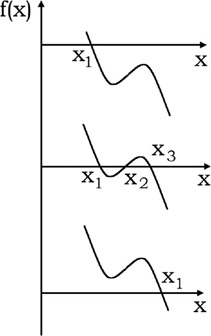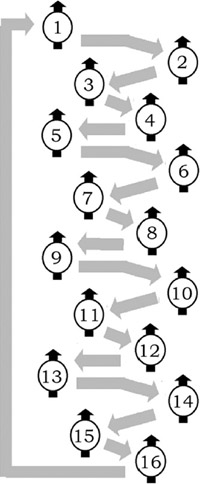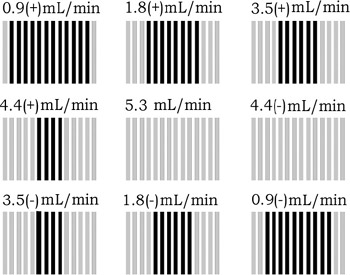4.9 Recognition Capabilities of Coupled Reaction-Diffusion Systems
|
4.9 Recognition Capabilities of Coupled Reaction-Diffusion Systems
During recent decades, most of the experimental and theoretical investigations on reaction-diffusion systems have been devoted to systems wherein the reaction medium was assumed to be continuous. But many interesting phenomena can be observed in cases of discrete reaction-diffusion media, particularly in systems that can be considered as a set of subsystems.
Coupled reaction-diffusion dynamic regimes in such systems have been investigated by different research groups (see, for instance, Stuchl and Marek 1982; Laplante and Erneux 1992; Dechert et al. 1996, and references in them). The following discussion will be from the point of view of designing information processing systems. Let us consider a system built of the simplest chemical elements (subsystems) that have only one state variable:
![]()
Because this is a one-dimensional system, the only attractors that are present are fixed points. They may be stable or unstable.
There are three possible cases of the system dynamics that are described by this equation (figure 4.23). Two of these are cases when the system has one fixed point; the third has three fixed points. A simple analysis of stability shows that if f(x) has only one zero, the fixed point is stable. If f(x) has three zeros, there are two fixed points where df(x)/dx < 0 are stable and the third where df(x)/dx > 0 is unstable. This is the case of a bistable system that could be in two different states.

Figure 4.23: Different cases of nonlinear dynamics in distributed one-dimensional systems.
Let us consider a network consisting of systems of the type shown in equation 4.12, which are coupled by diffusion, mass transfer (pumping), or some other stimulus. If all f(x) have only one zero, the network has only one stable state, which is homogeneous. If f(x) has three zeros, however, then the network may have up to 2N steady states. Thus each element in the network can, in principle, have two states, and the patterns of the network are given by different distributions of states corresponding to each element in the network.
There have been several experimental examples of stationary structure manifestations in coupled reaction-diffusion systems. Let us consider in more detail one of these reported by Laplante and Erneux (1992). They investigated a system of sixteen stirred-tank reactors arranged in a linear geometry. Each reactor was coupled to its next neighbors by mass exchange. The chlorite-iodine reaction
![]()
was used as a reaction medium. This is a bistable system whose states depend on flow rates. At low rates, only high iodine states exist. At intermediate flow rates, the autocatalytic mechanism results in a bistable state of either low or high iodine concentrations. The state of each reactor was determined visually by adding starch to the reactor inflow. Two 16-channel peristaltic pumps (for chlorite and iodide reagents) were used to feed each reactor with an identical flow of reagents.
Two more sixteen-channel peristaltic pumps implemented mass transfer. Reactors were split into two groups, odd and even, to avoid experimental drawbacks. The principal scheme of reactor interconnections is shown in figure 4.24.

Figure 4.24: Physical configuration of the continuous flow stirred tank reactor. Black arrows correspond to feeding of each reactor, gray arrows show reactor coupling. See details in the text.
Laplante and Erneux (1992) investigated two different cases of network dynamics. In the first of these, reactor 1 was fed with a chlorite solution only (asymmetrical boundary conditions). Then a wave of switching from high iodide concentration to low was observed in the process of network evolution after switching on the reactor coupling.
If the boundary condition was symmetrical (that is, reactor 1 and 16 were fed simultaneously with chlorite solution only) several different stationary structures were observed depending on coupling flow rates (figure 4.25).

Figure 4.25: Scheme of stationary structures in assembly of 16 coupled reactors obtained under symmetrical boundary conditions. Black blocks correspond to high iodine concentrations, grey blocks to low iodine concentrations. Exchange rates are shown in each plate ("+" means that the structure was obtained when exchange rate increased, "−" corresponds to a decrease of the exchange rate.)
Ross and his coworkers (see, for instance, Hjelmfelt, Weinberger, and Ross 1991, 1992; Hjelmfelt and Ross 1992; Hjelmfelt, Schneider, and Ross 1993; Hjelmfelt and Ross 1995) made a decisive step in understanding the importance of coupled reaction-diffusion systems for information processing. They used the network architecture of these systems to theoretically consider the possibilities of implementing a Turing machine (Hjelmfelt, Weinberger, and Ross 1991), finite-state machines (Hjelmfelt, Weinberger, and Ross 1992), and Hopfield-type neural networks (Hjelmfelt and Ross 1992).
It was shown by and Colleagues Ross (Hjelmfelt, Schneider, and Ross 1993; Hjelmfelt and Ross 1995) that chemically implemented neural networks display pattern-recognition capabilities. They used a bistable chemical medium based on the following reaction:
![]()
The processing elements of neural networks are called neurons. Each neuron has two states (like those of McCulloch and Pitts 1943) determined by the state variable x. For ith neuron, x = 0 and x = 1 correspond to "not firing" and "firing" states. Therefore a typical Hopfield network is unimodal (i.e., it has only one excited state).
Neurons in the net are coupled and the strength of connections is determined by matrix T. Here Tij is the strength of connection between ith and jth neurons. Matrix T is symmetrical in the case of a Hopfield neural net (Tij = Tji). It has zero diagonal elements (Tii = 0). The differences between neural nets are determined by the architecture of connections that are given in the T matrix.
The initial distribution of neuron states in the network could be defined as the initial pattern. This pattern is transformed by the network in a process of its evolution according to rules defined by matrix T.
A number of patterns could be stored in a neural network. One of the most well-known ways to do it is the so-called Hebbian rule:
Suppose that patterns that should be stored are:
![]()
Then for binary vectors, the Hebbian rule is defined as:
![]()
It means that:
-
Two elements Tij, which are in the same state in the majority of the stored patterns, are connected with a strength that depends on the number of patterns in which these elements have the same state.
-
Elements that are in opposite states in the majority of the stored patterns are unconnected.
In the case of chemical neural networks, Ross and his coworkers (Hjelmfelt, Schneider, and Ross 1993; Hjelmfelt and Ross 1995) used a modified Hebbian rule to store patterns, where the connection strength between elements i and j was defined as

where Rμi and Rμj are activities of systems i and j in the pattern μ, ƛ is a coupling constant—that is, the strength of reagent flow (in the case of chemical networks)—and:

It was shown (Hjelmfelt and Ross 1993) that this modified rule generates stable states corresponding to the stored patterns.
The theoretical approach developed by Ross and his coworkers proved to be a basis for experimental implementation (Laplante et al. 1995). A set of eight continuous-flow stirred-tank (CSTR) reactors was used to store three patterns. Mass transfer coupled this network of CSTRs. The matrix of connections as calculated according to equation 4.15 is shown in figure 4.26.

Figure 4.26: Matrix of connections for a chemical network having recognition capabilities (A; see text) and the process of recognition of a 10110001 pattern beginning from a 01110001 distribution (B).
Suppose that the states of CSTRs when coupling is switched off are set according to some patterns. After switching on coupling, two opportunities are possible:
-
The network of CSTRs will have a homogeneous distribution of states if the input pattern is far in phase space from any stored pattern.
-
one of the stored patterns is recalled if the input pattern is "near" to the stored one.
The performance of this chemical network was tested with three different sets of patterns having a variety of initial conditions (small differences in comparison with stored patterns). The efficiency of recalling stored patterns proved to be quite good, but the time needed proved to be about 60 minutes (see figure 4.26).
The investigation of chemical network recognition capabilities performed by Laplante and coworkers (Laplante et al. 1995) was the first where pattern recognition has been experimentally proved. It is necessary, however, to mention that the setup used by them was too cumbersome to be an efficient operating device.
There are other possibilities for designing multilevel systems that have recognition capabilities. A chemical system, based on electrical coupling of subsystems (Dechert et al. 1996) seems to be promising. In any case, the opportunities of this approach are far from exhausted. New, more powerful devices could be designed in the near future.
|